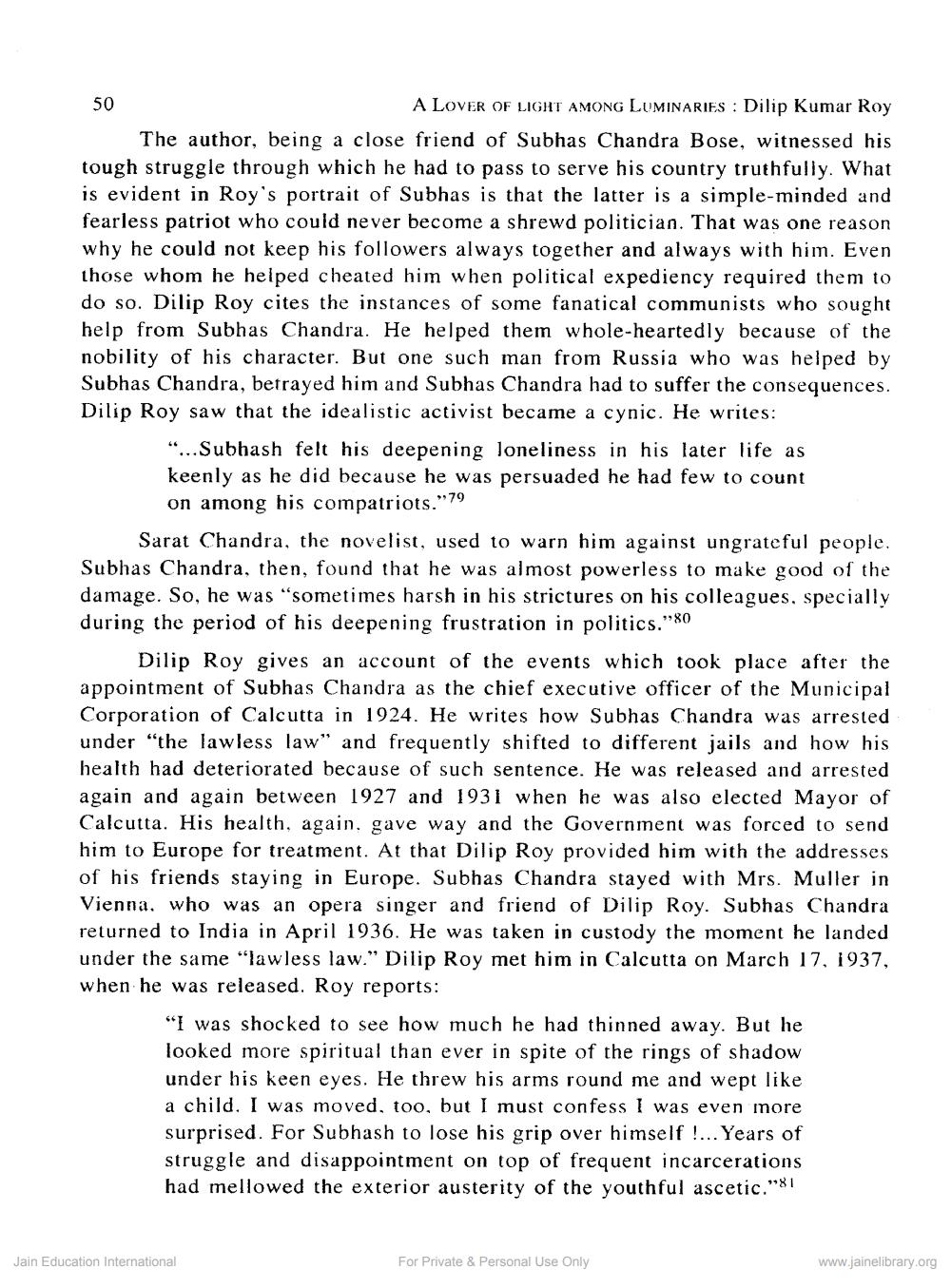________________
50
A LOVER OF LIGHT AMONG LUMINARIES : Dilip Kumar Roy The author, being a close friend of Subhas Chandra Bose, witnessed his tough struggle through which he had to pass to serve his country truthfully. What is evident in Roy's portrait of Subhas is that the latter is a simple-minded and fearless patriot who could never become a shrewd politician. That was one reason why he could not keep his followers always together and always with him. Even those whom he helped cheated him when political expediency required them to do so. Dilip Roy cites the instances of some fanatical communists who sought help from Subhas Chandra. He helped them whole-heartedly because of the nobility of his character. But one such man from Russia who was helped by Subhas Chandra, betrayed him and Subhas Chandra had to suffer the consequences. Dilip Roy saw that the idealistic activist became a cynic. He writes:
“...Subhash felt his deepening loneliness in his later life as keenly as he did because he was persuaded he had few to count
on among his compatriots."79
Sarat Chandra, the novelist, used to warn him against ungrateful people. Subhas Chandra, then, found that he was almost powerless to make good of the damage. So, he was "sometimes harsh in his strictures on his colleagues, specially during the period of his deepening frustration in politics."80
Dilip Roy gives an account of the events which took place after the appointment of Subhas Chandra as the chief executive officer of the Municipal Corporation of Calcutta in 1924. He writes how Subhas Chandra was arrested under "the lawless law" and frequently shifted to different jails and how his health had deteriorated because of such sentence. He was released and arrested again and again between 1927 and 1931 when he was also elected Mayor of Calcutta. His health, again, gave way and the Government was forced to send him to Europe for treatment. At that Dilip Roy provided him with the addresses of his friends staying in Europe. Subhas Chandra stayed with Mrs. Muller in Vienna, who was an opera singer and friend of Dilip Roy. Subhas Chandra returned to India in April 1936. He was taken in custody the moment he landed under the same "lawless law." Dilip Roy met him in Calcutta on March 17, 1937, when he was released. Roy reports:
"I was shocked to see how much he had thinned away. But he looked more spiritual than ever in spite of the rings of shadow under his keen eyes. He threw his arms round me and wept like a child. I was moved, too, but I must confess I was even more surprised. For Subhash to lose his grip over himself !... Years of struggle and disappointment on top of frequent incarcerations had mellowed the exterior austerity of the youthful ascetic."81
Jain Education International
For Private & Personal Use Only
www.jainelibrary.org




